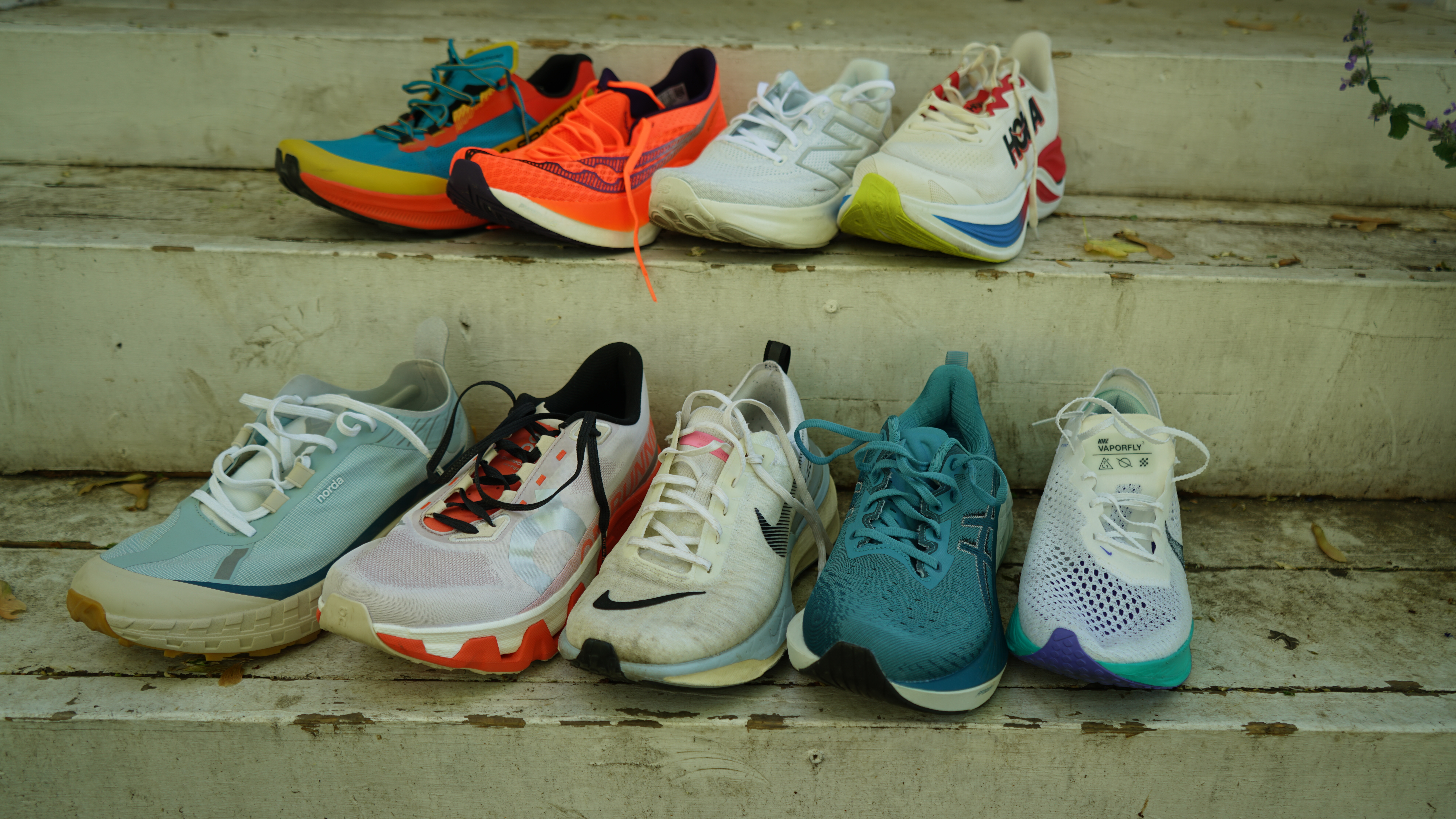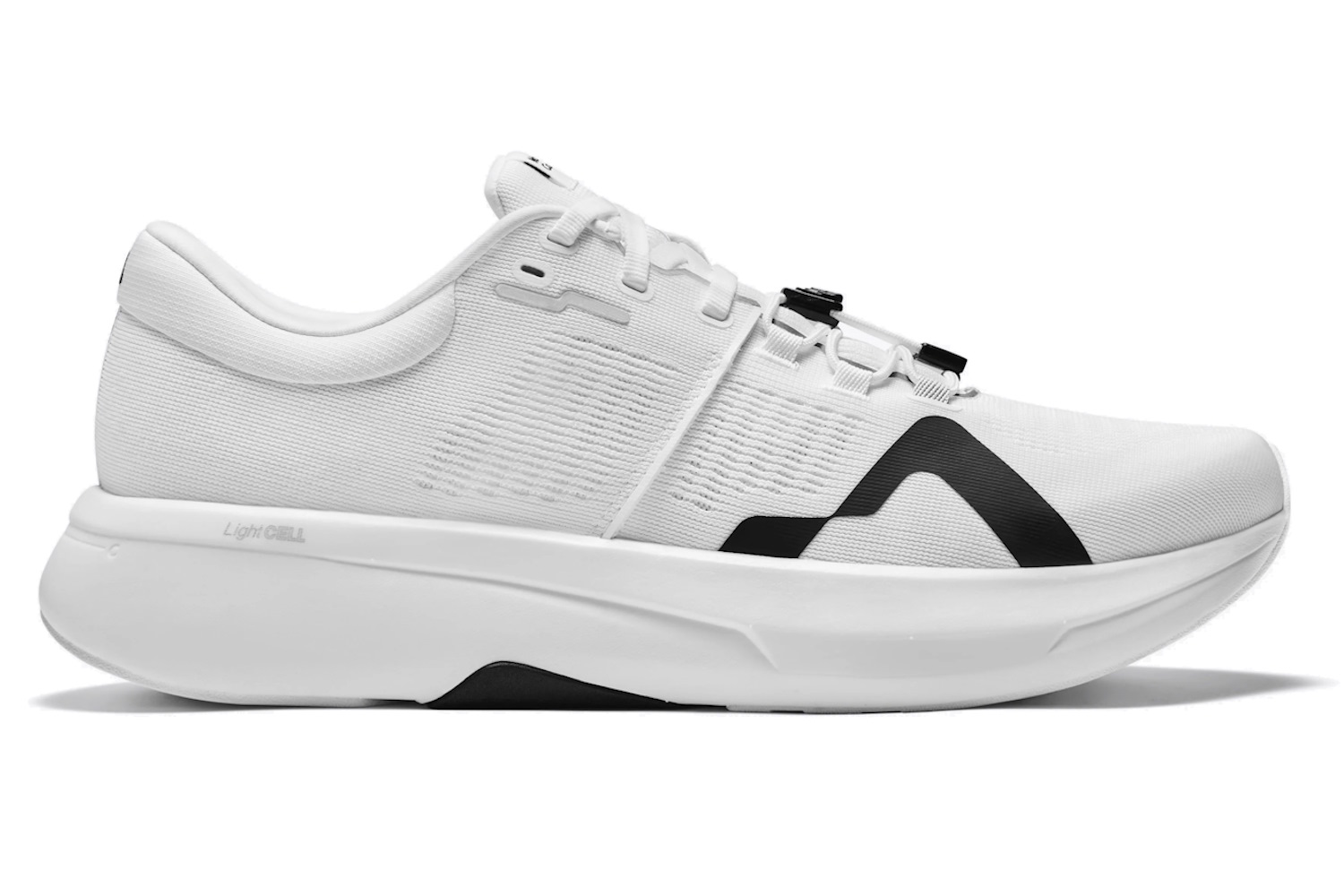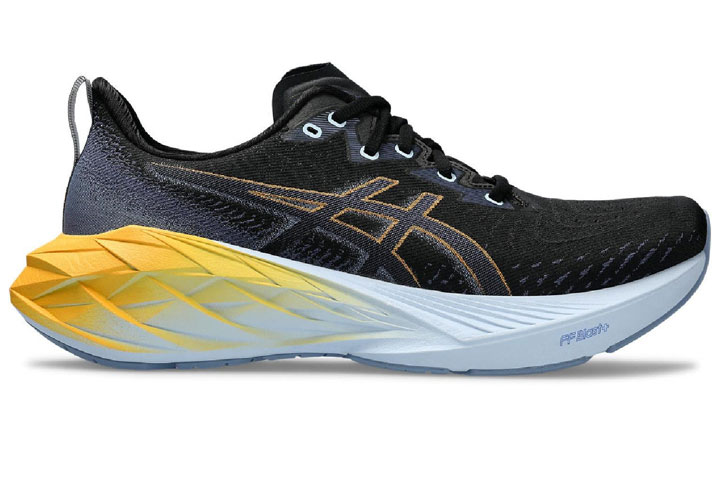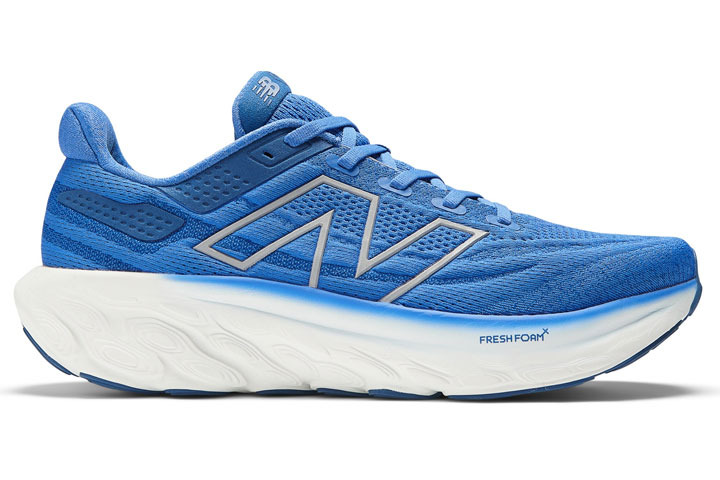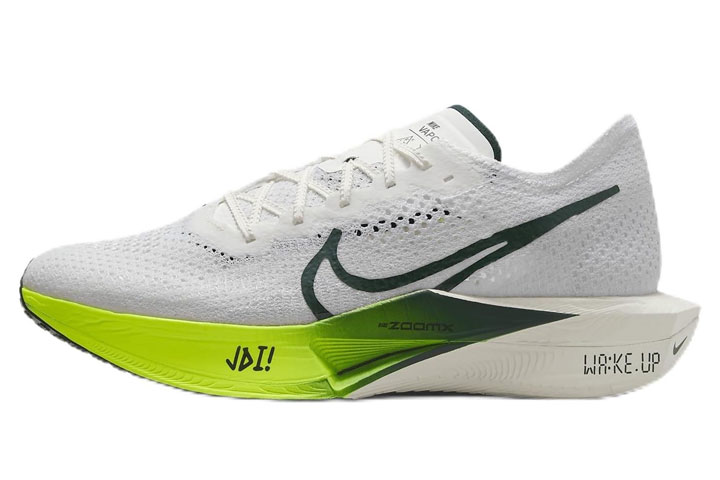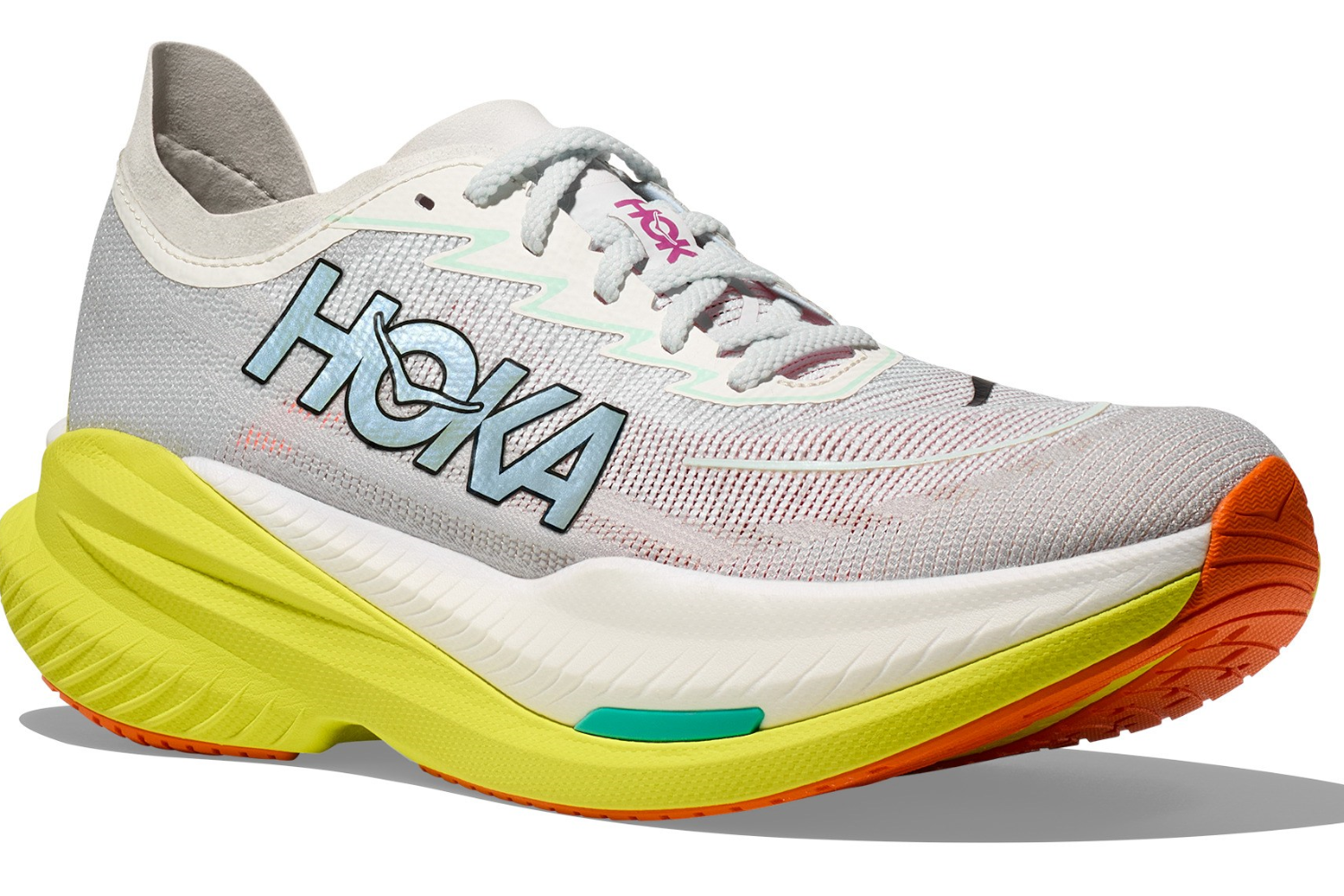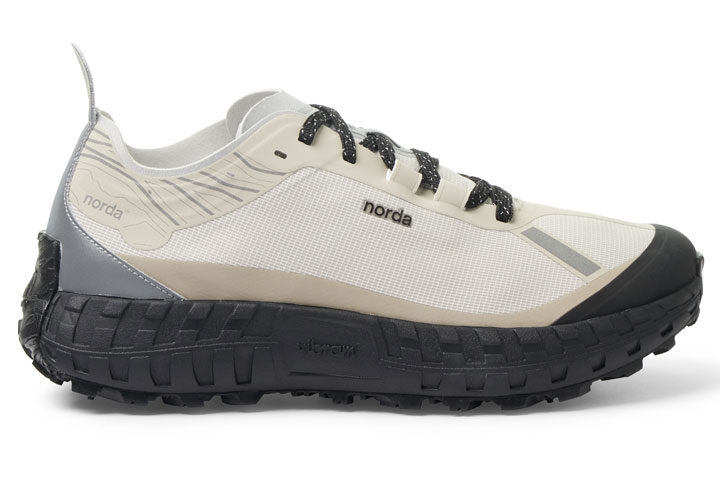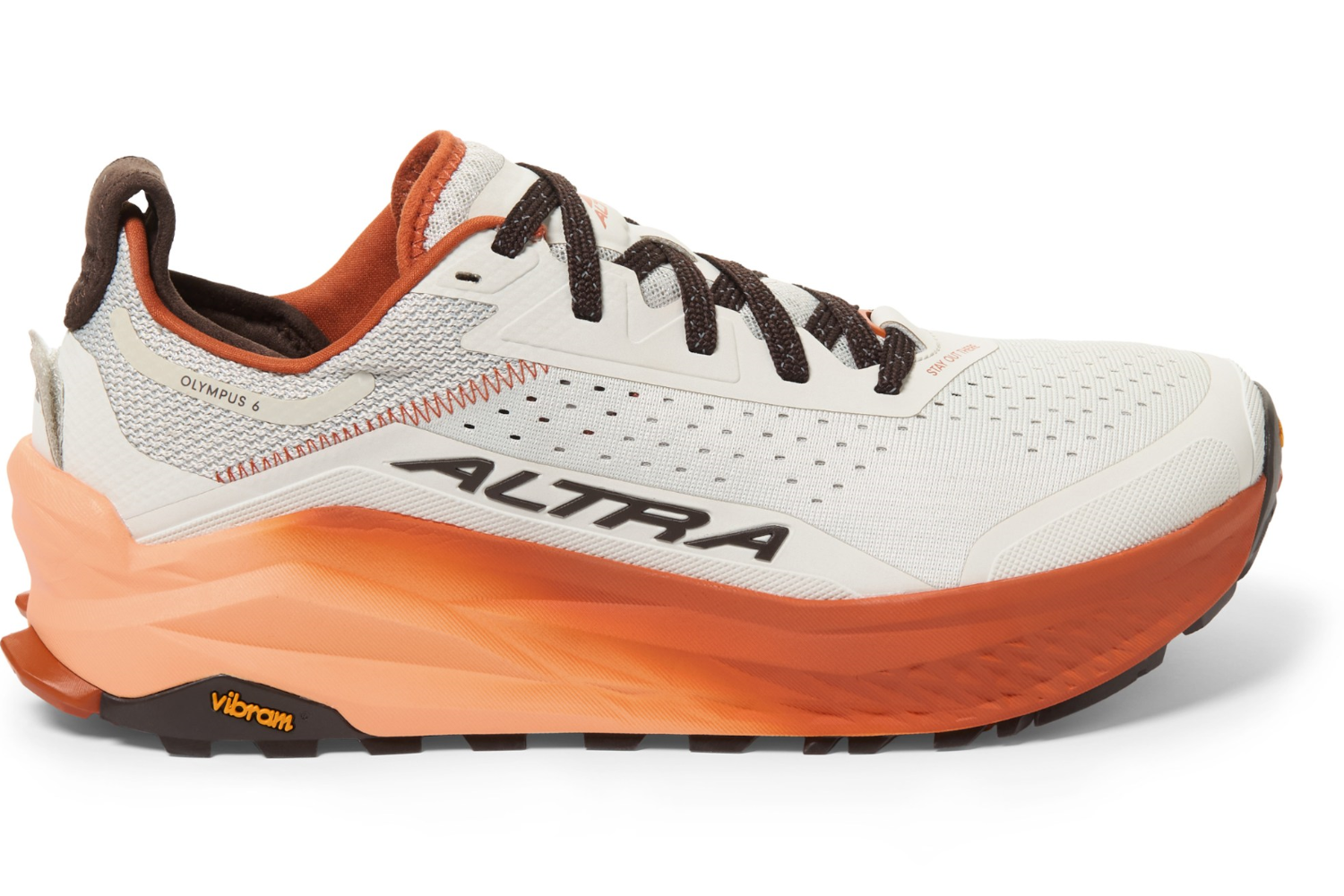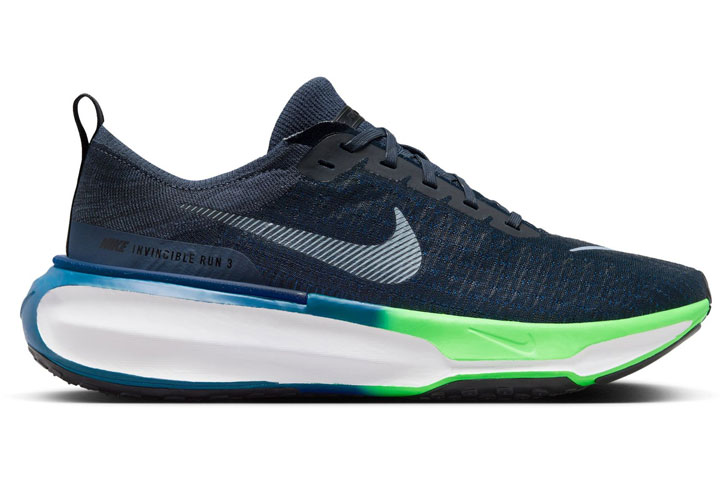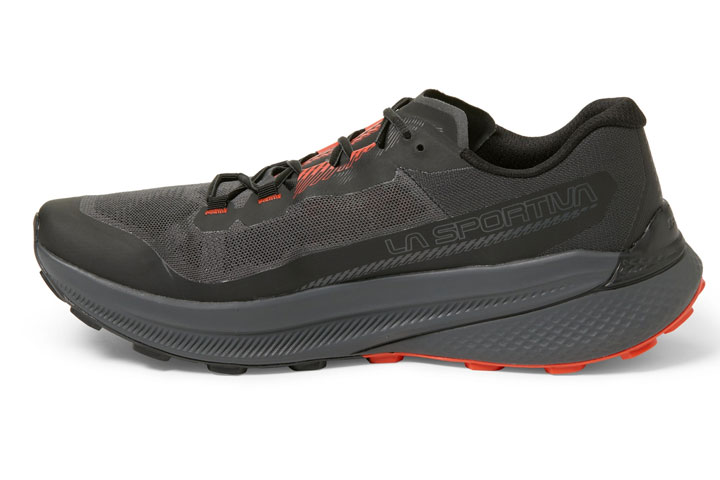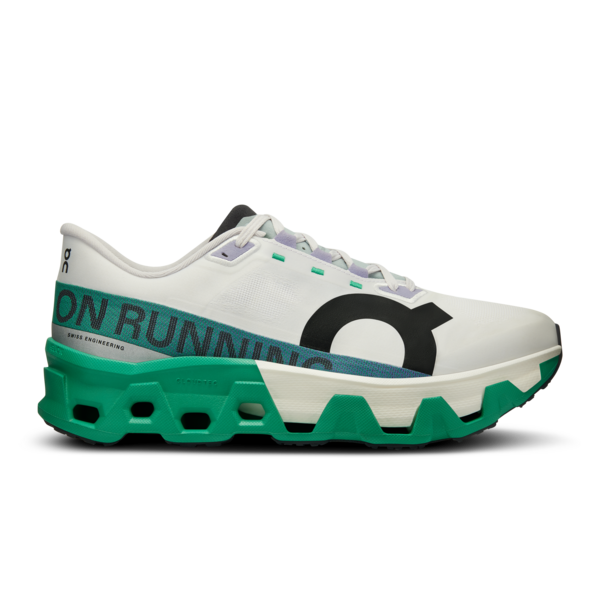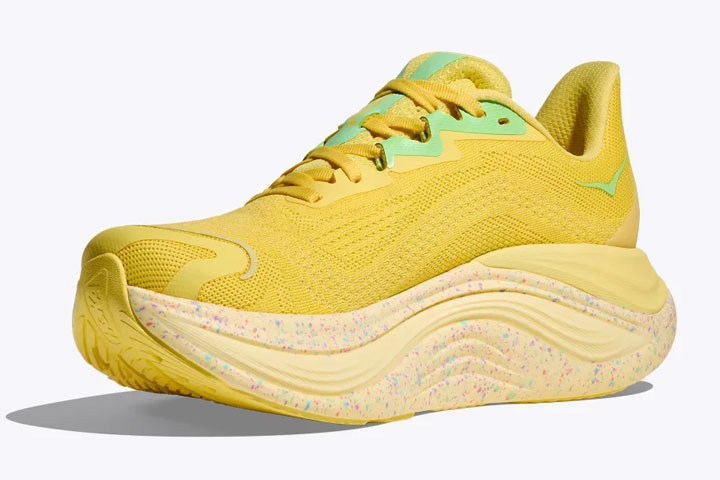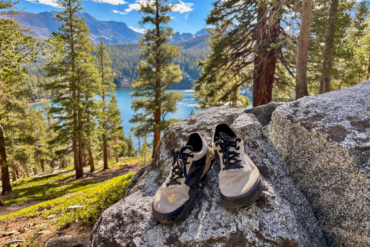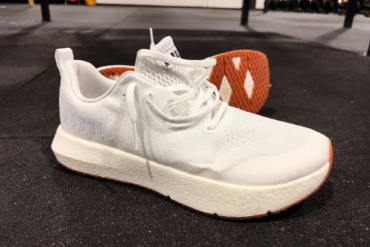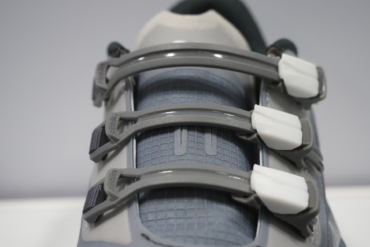Running is an exceptionally simple sport. You just lace any old trainers and head out the door. The more you run, though, the more you’ll realize that having the right gear, specifically the right shoes, will make a difference. The best running shoes for men will not only help you capture that elusive runner’s high, but they’ll also keep you comfortable on your feet, help prevent injuries, and flex your personal style.
Running shoes don’t have to be anything special to help you get your miles in, but with the right pair, you’ll find yourself seriously looking forward to each and every workout. There are shoes for every type of runner — and every type of run — so it’s important to have at least a passing understanding of what’s out there, whether you’re prepping for your first 5k or pushing yourself through a 20-week marathon training plan.
Almost every brand in the sport makes a shoe optimized for a different type of run: long runs, speed workouts, recovery days, 5ks, marathons, ultra-marathons — the list goes on and on.
Runners have more shoe options than ever, which is definitely a good thing. However, it can make choosing the perfect pair quite the undertaking. To make this decision easier for you, we tested dozens of pairs to pick out the best of the best. When it comes down to it, the choice is yours, but this is a great place to start your search.
Editor’s note: For our November 25, 2024, update, we added our new favorite, the Mount to Coast R1, the speedy Hoka Mach X 2, and the surprisingly plush zero-drop Altra Olympus 6.
The Best Running Shoes for Men
- Best Overall Running Shoe: Mount to Coast R1
- Best Budget Running Shoes: Asics Novablast 4
- Best Everyday Running Shoes: New Balance Fresh Foam X 1080v13
- Best Running Shoes for Marathon Racing: Nike Vaporfly 3
- Best Running Shoes for Speed Workouts: Hoka Mach X 2
- Best Trail Running Shoes: Norda 001
- Best Zero Drop Running Shoes: Altra Olympus 6
Mount to Coast R1
- Weight: 8.5 oz (US 9)
- Stack Height: 35 mm/27 mm
- Drop: 8 mm
- Best for: Long runs, speed work runs
Pros
- Dual-zone lacing system
- Incredibly long-lasting midsole
- Excellent energy return on long runs
- Wide toe box for comfortable toe splay
Cons
- Dual-zone lacing can be tricky to dial in
Asics Novablast 4
- Weight: 8.9 oz (Size 9)
- Stack Height: 41.5 mm / 33.5mm
- Drop: 8mm
- Best use: Long runs, easy days, and tempo efforts
Pros
- Comfortable upper supports foot while leaving room for toes
- Tall stack height still provides great ground feel
Cons
- Heel area can be too tight and shallow for some
New Balance Fresh Foam X 1080v13
- Weight: 9.2 oz (Size 9.5)
- Stack Height: 38mm / 32mm
- Drop: 6mm
- Best Use: Tempo workouts, easy runs and long runs
Pros
- Generous stack height is great over long distances
- Efficient toe off and rocker geometry make them great for faster efforts
- Upper is breathable and supportive
Cons
- Stack height isn’t optimal for runs with a lot of change in direction
Nike Vaporfly 3
- Weight: 7.1oz
- Stack Height: 38mm / 30mm
- Drop: 8mm
- Best use: Marathon racing, track runs, speed work
Pros
- Incredible energy return
- Higher durability than the previous iterations
- Very comfortable upper
Cons
- Narrow midfoot
- Expensive
- Tricky to use with custom insoles
Hoka Mach X 2
- Weight: 9.2 oz
- Stack Height: 44 mm/39 mm
- Drop: 5 mm
- Best for: Speed work, tempo runs, racing
Pros
- Rounded toebox doesn’t squish forefoot
- Can be worn for racing or training
- Secure, breathable upper
- More stable and supportive than other “super” trainers
Cons
- Longer break-in period
Norda 001
- Weight: 9.45oz (Size 8.5)
- Stack Height: 26mm / 21mm
- Drop: 5mm
- Best use: Trail running, ultra racing
Pros
- Dyneema upper is virtually indestructible
- The midsole and outsole last 750 miles or more
- Major style points
Cons
- Takes a few runs to really break in
- The most expensive shoe on our list
Altra Olympus 6
- Weight: 12.2 oz
- Stack Height: 33 mm
- Drop: 0 mm
- Best for: Trail running, fast hiking
Pros
- Sticky Vibram sole for traction
- FootShape fit provides ample space in the forefoot
- Integrated gaiter attachment points
- Excellent durability
Cons
- Zero drop isn’t for everyone
- On the heavier side
Nike Invincible 3
- Weight: 10.9oz (Size 10)
- Stack Height: 40mm / 31mm
- Drop: 9mm
- Best use: Long runs
Pros
- Cushion feels great for runs 10-15 miles (and beyond)
- Wide base and sturdy construction inspire confidence
Cons
- Footfall can feel sloppy
- Heavy, even for a long run shoe
- Weight: 9.5oz
- Stack Height: 34mm / 28mm
- Drop: 6mm
- Best use: road-to-trail
Pros
- Great for road-to-trail situations
- Super grippy rubber provides traction across all surfaces
Cons
- Outsole isn’t as aggressive as others
- Some prefer more padding around the ankle
- Weight: 10.3oz
- Stack Height: 37.5mm / 31.5mm
- Drop: 6mm
- Best use: Long runs, easy runs or workouts
Pros
- Super plush and energetic
- Substantial, high-volume upper cradles the entire foot
Cons
- Expensive for a training shoe
- Some may want a more snug upper
- Weight: 11.3oz
- Stack Height: 48mm / 43mm
- Drop: 5mm
- Best use: Easy runs, long runs, road-based tempo work
Pros
- Maintains a super plush ride over long distances
- Responsive foam and carbon fiber plate combo keeps legs energized
Cons
- Heavier than most shoes in their category
- A big hit on your wallet
Running Shoes for Men Comparison Chart
| Shoe | Price | Weight | Stack Height | Drop | Best For |
|---|---|---|---|---|---|
| Mount to Coast R1 | $160 | 8.5 oz. (US 9) | 35 mm / 27 mm | 8 mm | Long runs, speed work runs |
Asics Novablast 4 | $140 | 8.9 oz. (M US9) | 41.5 mm / 33.5 mm | 8 mm | Long runs, easy days, and tempo efforts |
| New Balance Fresh Foam X 1080v13 | $165 | 9.2 oz. (M US9.5) | 38mm / 32mm | 6 mm | Tempo workouts, easy runs, and long runs |
| Hoka Mach X 2 | $190 | 9.2 oz. | 44 mm / 39 mm | 5 mm | Speed work, tempo runs, racing |
| Nike Vaporfly 3 | $260 | 7.1 oz. | 38 mm / 30 mm | 8 mm | Marathon racing, track runs, speed work |
Norda 001 | $285 | 9.45 oz. (M US8.5) | 26 mm / 21 mm | 5 mm | Speed work, track workouts, racing |
| Altra Olympus 6 | $175 | 9.45 oz. (Size 8.5) | 26mm / 21mm | 5mm | Trail running, ultra racing |
Nike Invincible 3 | $180 | 10.9 oz. (M US10) | 40 mm / 31 mm | 8 mm | Long runs |
La Sportiva Prodigio | $155 | 9.5 oz. | 34 mm / 28 mm | 6 mm | Road-to-trail |
ON Cloudmonster Hyper | $220 | 10.3 oz. | 37.5 mm / 31.5 mm | 6 mm | Long runs, easy runs, or workouts |
| Hoka Skyward X | $225 | 11.3 oz. | 48 mm / 43 mm | 5 mm | Easy runs, long runs, road-based tempo work |
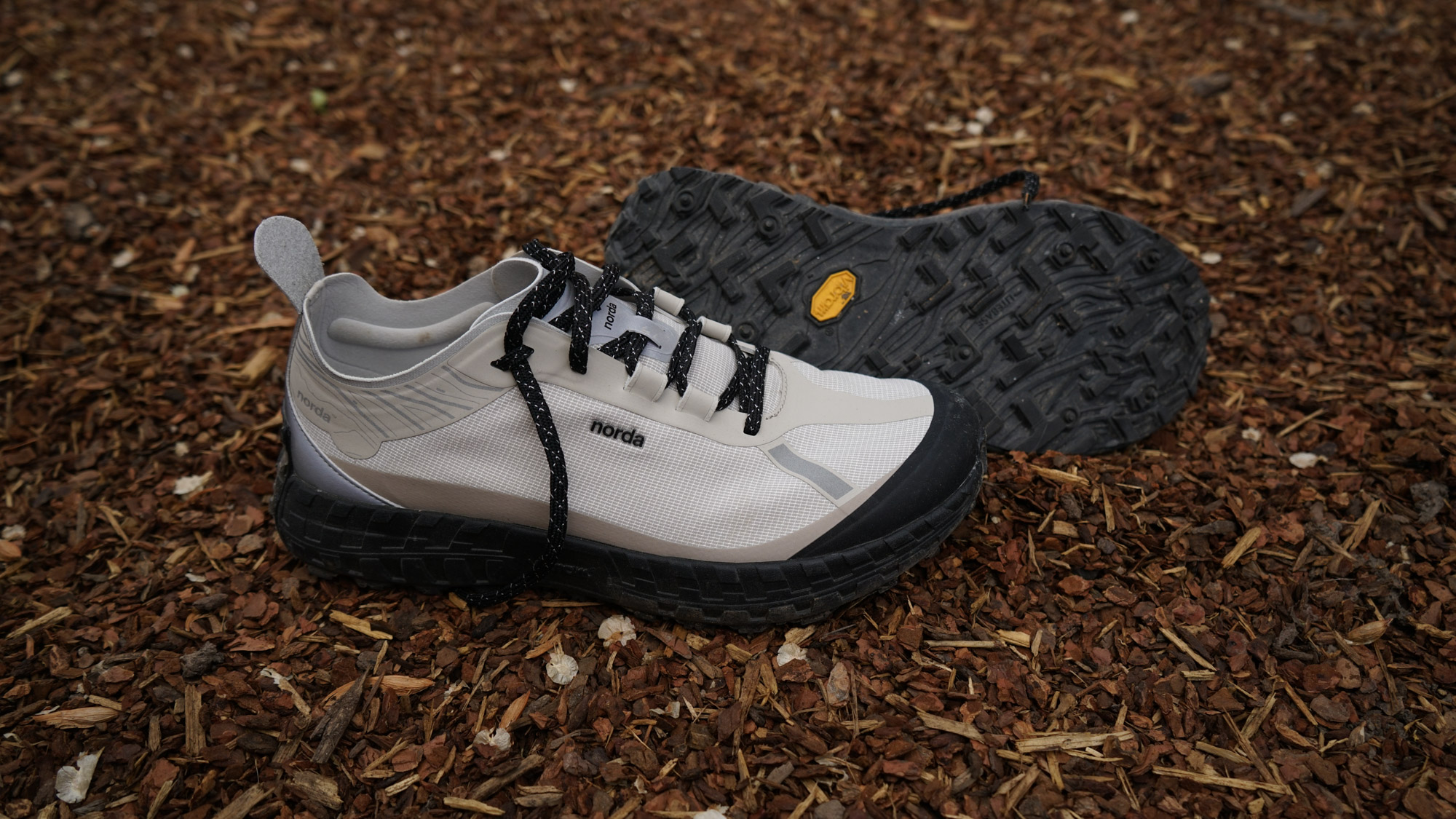
How We Tested Running Shoes
Our Expert Tester
Lead tester Will Porter is a multi-hyphenate runner who just likes to get out and run for as long as possible. He relishes the Sunday long run and will hit the local Boise foothills a few times a week for a trail run. Right now, he’s training for both a road half marathon and a trail 50k, so it was the perfect season to put a number of shoes to the test.
He’s partial to a plush shoe with a decent drop, but for midweek speed sessions, he likes something light and barely-there — he says it reminds him of his high school track days.
Our Testing Process
Every runner is different, so we also solicited feedback from a diverse group of runners. For this review, GearJunkie tasked a test team with logging miles and weighing in with their perspective as competitive runners, physical therapists, and former shoe designers.
We tested the latest shoes from every brand, and all testers were asked to rank each shoe numerically and write short-form reviews of the top-ranked shoes. Armed with our testers’ feedback and our own impressions, GearJunkie picked the best running shoe in the most popular shoe categories.
Buyer’s Guide: How to Choose the Best Running Shoe
Running shoes have their fair share of complexity. Sorting through today’s shoe stats like stack height, heel drop, weight, and now carbon fiber plates can give anyone a headache. Luckily, we’re here to cut through the noise and give it to you straight.
Over our years reviewing shoes, GearJunkie testers have run in just about every running shoe produced. More than that, we’ve recruited teams of testers for feedback and talked with shoe engineers, podiatrists, and specialty running store owners.
Armed with this knowledge, we’ve picked the best shoes of the season based on our editors and test team’s input paired with head-to-head comparisons.
It’s worth noting that this guide focuses specifically on road running shoes. Be sure to check out our comprehensive guides on the best trail running shoes and the best hiking shoes — if that’s more your pace.
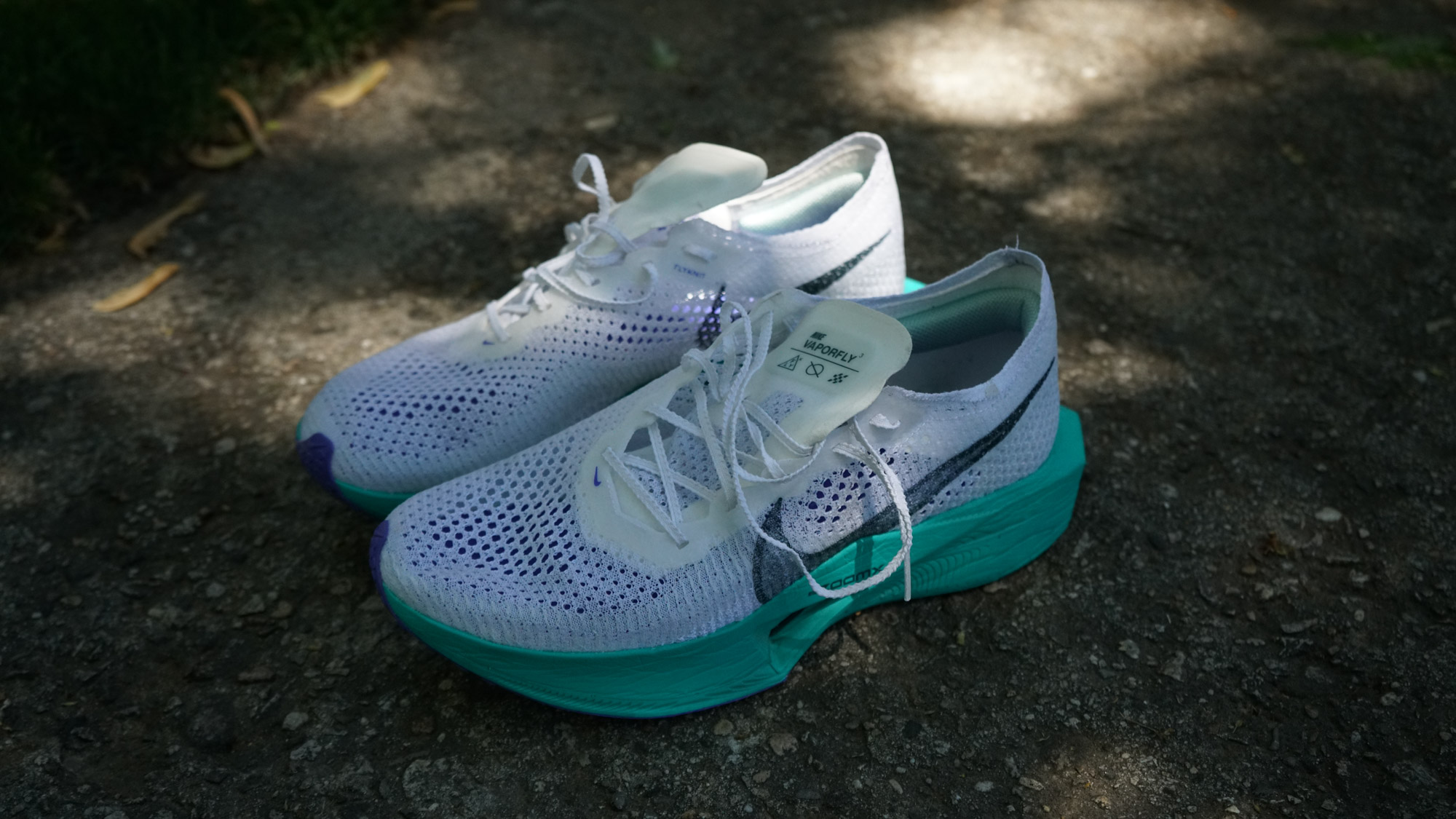
Comfort Is King
After talking with many physical therapists, running store owners, and shoe experts, they all agree on one thing — pick a running shoe based on comfort. The shoe that feels, fits, and runs the best is most likely going to be the best shoe for you.
Fortunately, most of today’s online shoe retailers allow a full refund or credit on used shoes within a 30- or 90-day window. This allows you to buy a pair of shoes, try them out for a few runs, and make the decision. This is also a nice feature to ensure that you get the correct sizing.
Sizing Properly
In our experience, most people wear running shoes that are too tight. The rule of thumb (literally) is you should have a thumb-width of space between your longest toe and the edge of the running shoe. For most, this will be half to three-quarters of an inch.
You need this space for two reasons. First, as you run, your feet will slide slightly forward. This extra space prevents your toes from consistently banging up against the inside wall of the shoe. Second, if you run long enough and in higher temps, your feet will swell. Again, extra space is necessary. The thumb’s width rule is a great way to size your shoe while accounting for how much your feet may swell during a long run.
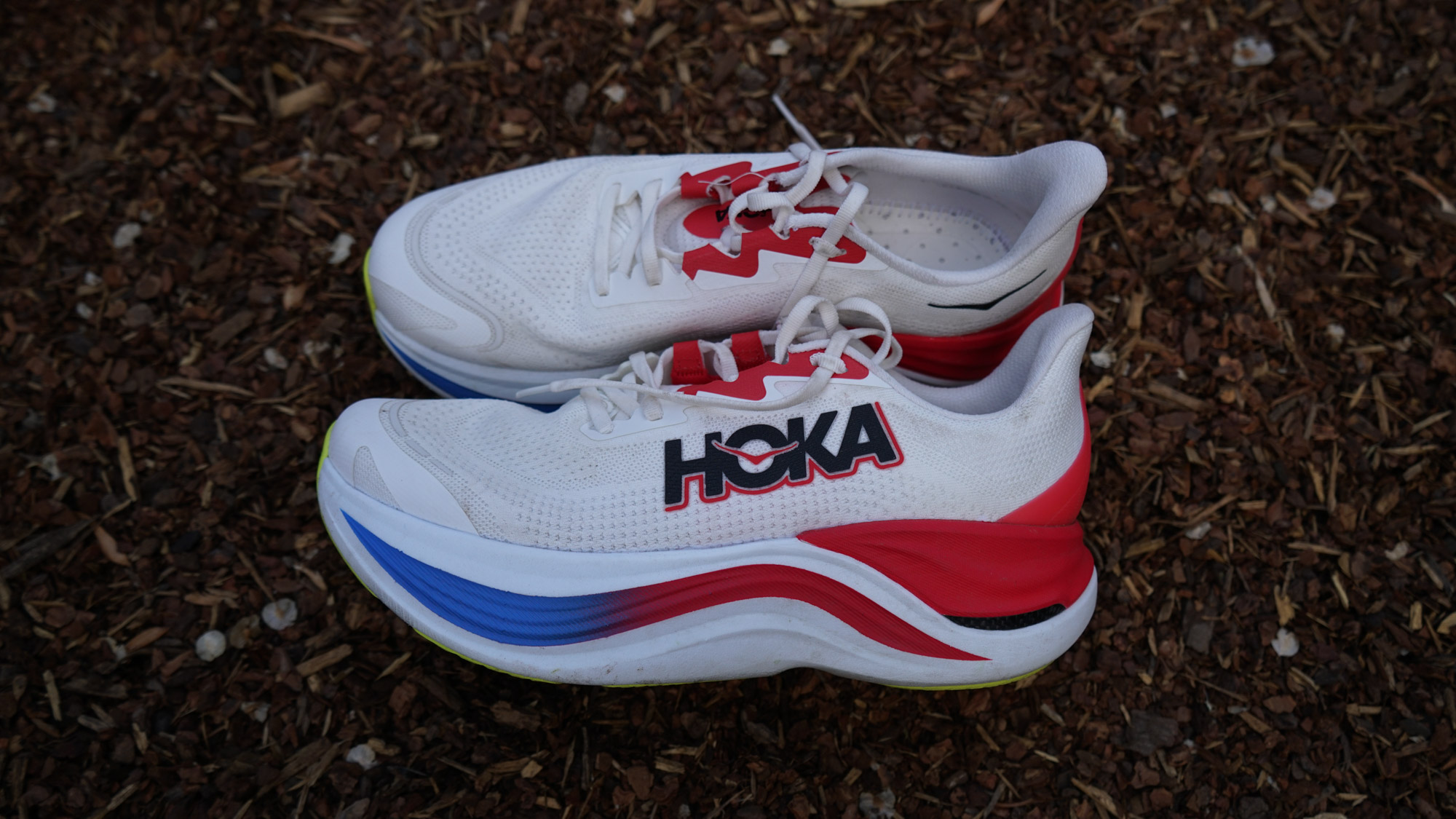
Finding the proper width is a little trickier. Shoe width varies from brand to brand and even within the same brand between models. There are brands that are known for being wide or narrow.
Altra and Topo are known for favoring runners with wide feet. Aside from these two, it’s hard to make absolute assumptions across all models of a brand as being wide or narrow.
The Details: Stack Height, Drop, and Weight
If you want to geek out on the stats of a shoe, that’s fine. But we would steer clear of making decisions solely based on them. Pay attention but don’t obsess.
Sure, there is a pretty big difference between a 12mm drop and zero drop, so much so that we don’t suggest making such a drastic change. But between a 4mm and 6mm drop, it’s marginal. To put it in perspective, it’s the difference in the thickness of a nickel.
Stack Height
This is usually the measurement of the bottom of the shoe to the bottom of the inside of the shoe. It gives a measurement of how much material there is between your foot and the ground.
The higher the stack height, the thicker the sole. We say “usually” because some brands will not include the insole as part of the stack height measurements.
Drop
Drop is the difference in measurement of stack height between the heel and toe. It ranges from zero to 12 mm. The higher the drop, the less strain on the Achilles, soleus, and calves. Zero-drop shoes are associated with a more natural barefoot running feeling.
Weight
The weight of a shoe can give a good insight into the type of running for which the shoe is best suited. Lightweight shoes — ones weighing less than 8 ounces for men and 7.5 ounces for women — are typically designed for faster running and racing.
Heavier shoes — 10 ounces for men and 9 ounces for women — are more suited for everyday training. In most cases, we’ve found weight to be a good insight into the durability of a shoe. Lighter shoes with less foam tend to wear out more quickly than the thicker, heavier ones.
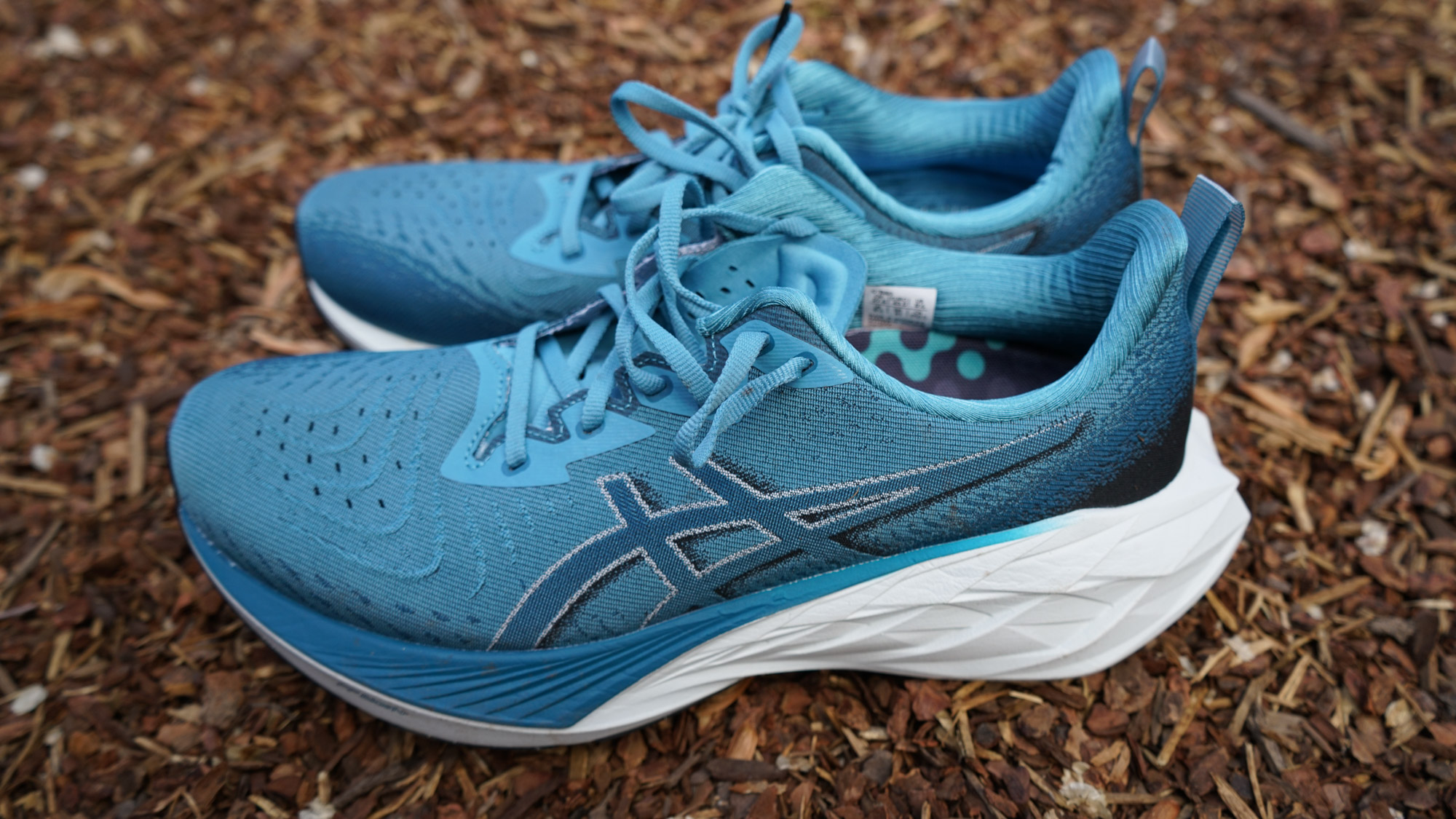
Neutral vs. Supportive
Should a shoe correct over/underpronation or not? Some say yes; others say no. Most of the experts we’ve spoken with say it depends. Those needing a supportive shoe look for a sturdy heel cup, multi-density EVA midsoles, and a mid-foot truss or bridge that stabilizes the shoe.
Bottom Line
Comfort is king, and if you’re still unsure, we recommend taking a trip to your local specialty running store to get their advice. With proper footwear and proper training, you, too, can pound out the miles on the pavement in relative comfort.
A Note About “Super Shoes”
We do want to add a couple of caveats when it comes to carbon-plated super shoes — our top pick, the Nike Vaporfly 3, included. If you’re going to wear these in a race, definitely do not wait until race day to lace them up for the first time. They will definitely take some getting used to, so we recommend logging a few miles in them per week for the last month of your training, even if that means taking just them out for a nice jiggle-jog on a rest day.
Jiggle-jog: yes, full-on training: no. Super shoes should be broken in, no doubt about it. But we don’t recommend wearing race day shoes on your long runs or easy runs throughout the week. Not only will they lose some of their race day pep, they can be hard on your feet.
And, finally, carbon-plated shoes really do require speed to provide the best benefits. Based on our testing, carbon-plated shoes only really start to make you faster if you’re running faster. Don’t believe us? Studies have proven that the speed and energy return provided by carbon-plated shoes is directly proportional to how fast you’re going.
The quicker the pace, the greater the benefit. Slower runners (this writer included) may find that they perform better in their favorite speed or long-run shoes on race day.
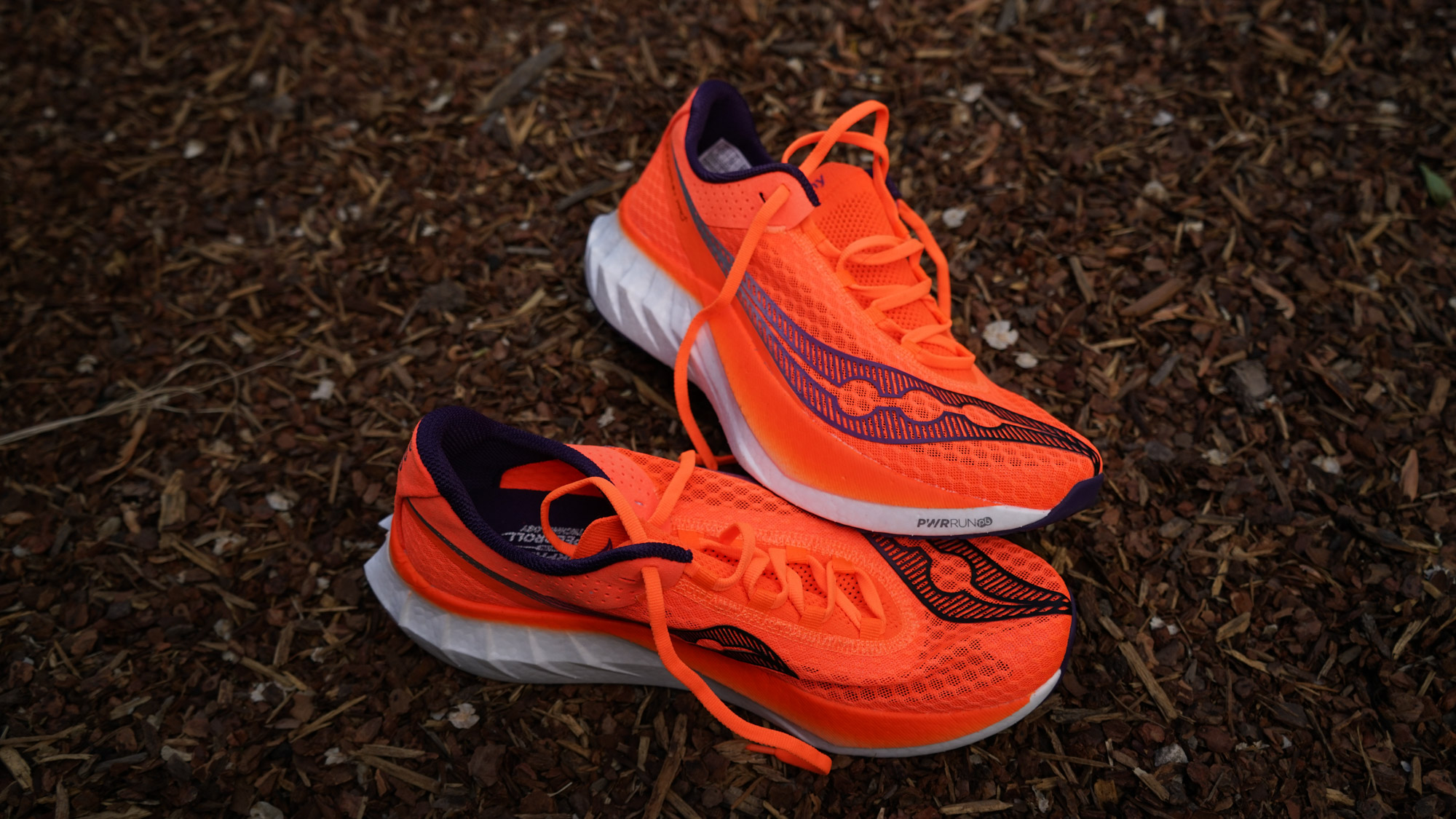
More Than One Pair
Do you really need more than one pair of running shoes? Think of it this way — do you really need more than one pair of shoes in general? Technically, no. But if you start to pull away the layers, you have work shoes, workout shoes, comfortable shoes, slippers, flip-flops, etc.
Just like all your other shoes, running shoes perform best in certain scenarios. For example, the HOKA Clifton 9 makes a great recovery run shoe but not so much a great speed workout shoe. On the flip side, a carbon fiber shoe makes a great race day shoe but not a great recovery run shoe.
One solution is to own at least three pairs of road running shoes: a durable everyday trainer, a speed or race day shoe, and one super-comfortable recovery run shoe. By rotating between shoes, you’ll be less likely to get overuse injuries from your shoe.
Price & Value
For the most part, quality running shoes will run you anywhere from $100-$300. The most affordable options are generally going to be daily trainers that are comfy but not outfitted with any bells and whistles to enhance speed or drop your mile times.
From there, prices go up based on the type of foam used, what outsole the shoe is kitted out with, and whether or not the shoe has some sort of midsole plate made for propulsion. At the top of the line, you’ll find carbon-plated super shoes that utilize advanced materials and supercritical foams to propel you to PRs (if you can keep the right pace).
Budget
This is where you can find shoes for under $150. It seems insane to say this, but this is just where we’re at in the running world right now. You can spend under $100, for sure, but those won’t hold up to the rigors of everyday training or even two to three runs a week. Budget shoes are still great, though. One of our absolute favorite trainers is the Asics Novablast 4, which is a bargain when compared to some of its competitors.
In this category, by spending less, you are really only sacrificing advanced technology designed to help you run really fast or for an exceptionally long time, which isn’t necessary for most runners. The sport is, after all, meant to be simple. Budget shoes are simple, affordable, and suitable for almost any run you can dream up.
Mid-Tier
Mid-tier is where most of the shoes in the category fall these days, somewhere between $150 and $200. Our favorite running shoes right now, the Mount to Coast R1, come in at a perfectly reasonable $160, especially considering their advanced tech. They save cost by eschewing the popular carbon plate that so many shoes offer — which, if you haven’t noticed by now, we’re not really that into as a technology for the people.
This price tier includes daily trainers, shoes for speedwork and track workouts, and race-day shoes. If you love to rotate your running shoes or pick up a couple of new pairs every few months, sticking to this tier will give you the best bang for your buck.
You likely will not find a shoe with a carbon plate for under $200, but you can find super trainers and speed shoes at this price point that do have nylon plates or similar technology that can almost do the same thing. Check out the Asics Superblast 2 or Hoka Mach X 2 if you want a shoe that boasts premium tech at more wallet-friendly prices.
Premium
These days, premium running shoes are generally found at price points around $200 or more. You may have missed it, but Adidas launched a race-day marathon shoe that will set you back $500. It’s not even available at the moment, but that’s fine because spending $500 on a shoe is diabolical — the only people who should be wearing that shoe are getting paid to wear it, not the other way around.
That’s an outlier in the category, but it indicates where the running shoe marketing is headed: spend big, and you might get big results. That’s a helluva promise, and for many runners, these expensive carbon-plated super shoes can deliver. However, for most people, these shoes are simply not worth it.
They’re not made to last (the Adidas shoe even came with a printed card that claimed the shoe was only at its peak for one marathon), and they can cause injuries if you’re not used to running with them.
Some expensive shoes, however, are certainly worth it. Norda 001s are a prime example: we have worn a single pair of Nordas for 1,000 miles without any signs of slowing down. They cost nearly $300 but will last longer than two cheaper pairs might.
Frequently Asked Questions
Yes, absolutely. The soles of running shoes are made with a special type of foam that is designed to withstand the higher ground impact forces exhibited while running. This foam underfoot, called a midsole, makes running more comfortable and offers more durability over non-running shoes.
Furthermore, a running shoe’s upper will hold your foot in place better and offer more breathability than a non-running shoe. In general, it is not recommended to run in casual sneakers.
Cushioning is a matter of personal preference and does not necessarily make one shoe better than another. Cushioning refers to the level of firmness of the foam underfoot and can be largely subjective. What one runner finds firm, a heavier runner may find soft. It was previously thought that a more cushioned shoe reduced the impact on your legs.
However, it’s been found that your body will adjust forces based on the firmness of the surface you are running on. The bottom line is to buy a running shoe that feels comfortable to you.
The ultimate question is a size up from what shoe? Running shoes should have a thumb width of extra space in the toe. The reasoning behind this is that as you run, your feet will naturally slide forward a little. The extra space will prevent your toes from jamming against the front of the shoe.
A properly fitting shoe should be somewhere between tight and loose. Shoes that are too tight can cut off circulation and cause your feet to go numb, while running shoes that are too loose can cause hot spots and generally feel uncomfortable.
We recommend a shoe that fits snugly enough to prevent your heel from lifting and provides a thumb’s-width of room in the toes. It’s important not to tie your laces too tight. We like to tie them loose enough that we can remove our shoes with a small amount of force without untying the laces.

The Best Men’s Running Shirts of 2025
We put countless miles into finding the best running shirts. Here are our picks from Icebreaker, Arc’teryx, and more.

The Best Trail Running Shoes of 2025
We tested and ranked the best trail running shoes for every style and budget. Top picks include shoes from SCARPA, HOKA, and more!
